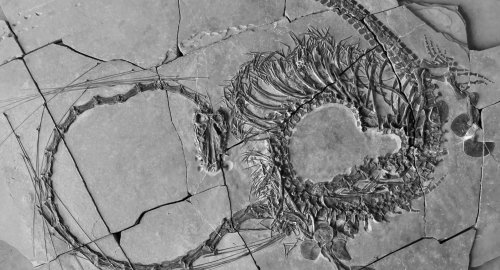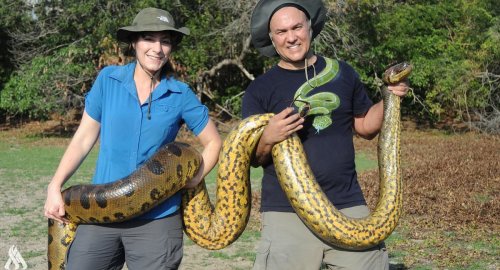
Scientists Announce They’ve Discovered 240 Million-Year-Old 'Chinese Dragon' Fossil: ‘Very Strange’

- 28-02-2024, 08:59
INA- sources
Scientists at the National Museums Scotland have discovered a 240 million-year-old "Chinese dragon" fossil — formerly known as Dinocephalosaurus orientalis.
The aquatic reptile was found in Guizhou Province in Southern China, per the NHS press release. Although the five-meter-long reptile was first identified in 2003, there has been a recent discovery “of additional, more complete specimens, including one which is fully articulated." This allowed the researchers to identify the fossil in its entirety for the first time.
Researchers involved in this discovery hailed from around the world, including Scotland, Germany, America and China. Those involved studied the findings for over 10 years at the Chinese Academy of Sciences’ Institute of Vertebrate Palaeontology and Palaeoanthropology, Beijing.
The “32 separate neck vertebrae" species dates back to the Triassic period, which is estimated to be around 240 million years ago. The ancient reptile had flippered limbs indicating that it was "clearly very well adapted to an oceanic lifestyle.” The found fossil also had “exquisitely preserved fishes in its stomach region.”
The reptile “had an extraordinarily long neck that draws comparison with that of Tanystropheus hydroides, another strange marine reptile from the Middle Triassic of both Europe and China," the NMS scientists said in the press release.
"Both reptiles were of similar size and have several features of the skull in common, including a fish-trap type of dentition," read the statement. "However, Dinocephalosaurus is unique in possessing many more vertebrae both in the neck and in the torso, giving the animal a much more snake-like appearance."
"Despite superficial similarities, Dinocephalosaurus was not closely related to the famous long-necked plesiosaurs that only evolved around 40 million years later and which inspired the myth of the Loch Ness Monster."
“It is yet one more example of the weird and wonderful world of the Triassic that continues to baffle paleontologists,” said Dr. Nick Fraser FRSE, Keeper of Natural Sciences at NMS. “We are certain that it will capture imaginations across the globe due to its striking appearance, reminiscent of the long and snake-like, mythical Chinese Dragon.”
“Working together with colleagues from the United States of America, the United Kingdom and Europe, we used newly discovered specimens housed at the Chinese Academy of Sciences to build on our existing knowledge of this animal,” said Professor Li Chun from the Institute of Vertebrate Palaeontology and Palaeoanthropology, calling the Dinocephalosaurus "the most remarkable.”
source: people
First joint picture of Greenland Ice Sheet melting, ESA
- Multimedia
- 09:28
US Central Command: We killed ISIS terrorist leader Abu Yusuf in Syria
- International
- 24/12/20
Liverpool compete with Real Madrid to sign Olympique Lyonnais star
- Security
- 24/12/19
ISC, ADX discuss Strengthening Economic Ties
- Economy
- 24/12/16
Iraq assumes presidency of Arab Investment Company’s Executive Board
- Economy
- 24/12/17












